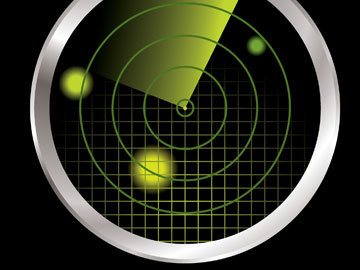
A research report released today by the ATSB reveals that the vast majority of loss of aircraft separation occurrences in Australia present little or no risk of collision, but more can be done to improve safety. (A loss of separation occurs when two aircraft under air traffic control come closer than a minimum separation distance.)
The report shows that Australia has one of the lowest loss-of-separation occurrence rates, attributable to civilian air traffic control, in the world. A loss of separation (LOS) between aircraft under air traffic control happens on average once every 3 days. In almost 90 per cent of LOS occurrences there was no or a low risk of aircraft colliding. Australia has about six LOS occurrences each year that represent an elevated safety risk. However, a LOS does not normally indicate that there was a near-collision between aircraft. There have been no midair collisions in Australia involving aircraft being provided with a separation service by air traffic control.
The report also reveals that half of all LOS occurrences are attributable to air traffic controller actions, while the other half result from pilot actions. The ATSB considers that more can be done to learn from LOS occurrences attributable to pilot actions in civil airspace.
The number of LOS occurrences under military control was found to be relatively high and most are the result of controller actions. The report finds that current regulatory arrangements do not enable the Civil Aviation Safety Authority (CASA) to give the same level of safety assurance for civilian aircraft under military control as it does for aircraft under civilian control. The ATSB has issued safety recommendations to the Department of Defence and CASA to address the safety issues identified in the report.
The release of this report coincides with the release of two other ATSB investigation reports into separate incidents (one near Ceduna, SA and the other about 900 km northwest of Karratha, WA) that involved losses of separation between passenger aircraft under air traffic control. As part of the Karratha investigation, the ATSB issued two safety recommendations to Airservices Australia. These recommendations were issued in response to the limited formal guidance available on the monitoring of newly endorsed controllers and the use of clearances that allow aircraft to operate anywhere between two flight levels, rather than at a single level.
All three reports are available on the ATSB website.
- AR-2012-034 Breakdown of separation between aircraft in Australia: 2008 to 2011
- AO-2011-144 Breakdown of separation - Boeing 737, VH-VXM and Boeing 737, VH-VUV, near Ceduna Airport, SA, 8 November 2011
- AO-2012-012 Loss of separation between Airbus A320, 9V-TAZ and Airbus A340, A6-EHH near TANEM, 907 km NW of Karratha, WA, 18 January 2012


